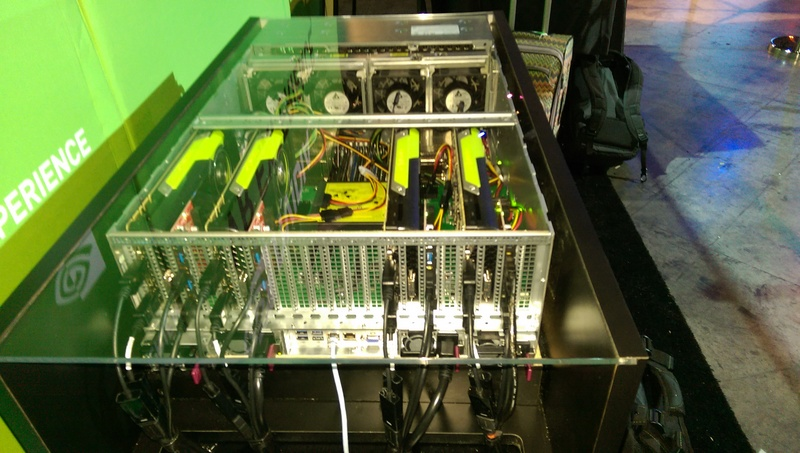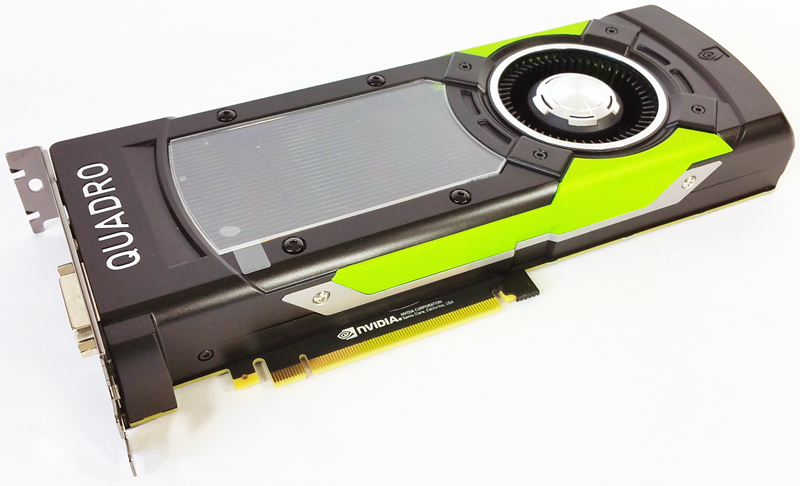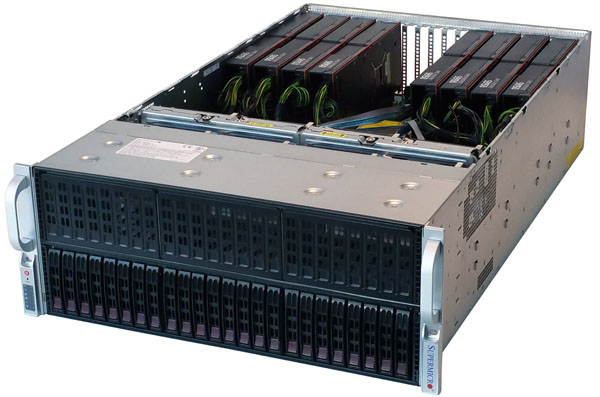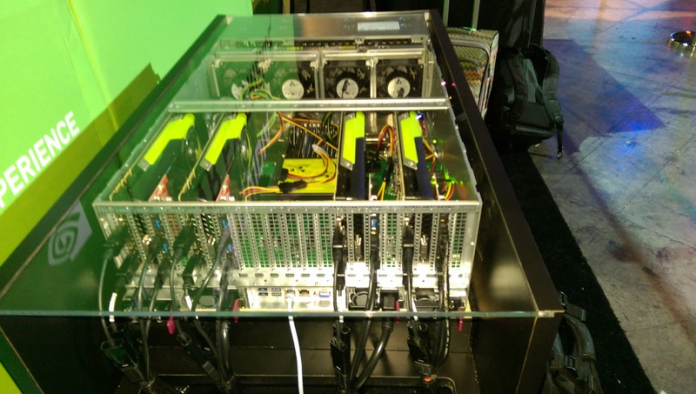NVIDIA is pushing Multi-User VR this week using components STH has reviewed. Recently, Jaguar-Land Rover utilized a multi-user VR approach in a new concept car launch and we see multi-user VR as an important capability firms will adopt over the coming years. While the price of the system can be steep (we estimate around $25,000 per node as shown and up), the cost is relatively low in comparison to the capabilities you can get. While NVIDIA did not publicly release details about the system, STH has reviewed the components involved.
Shared VR Experience: Jaguar I-Pace Concept Launch
An example of a shared VR experience was the Jaguar I-Pace concept car launch. When unveiling its futuristic all-electric car, Jaguar utilized VR to create a virtual showroom to show off its vehicle.
For firms designing vehicles, ships, buildings and etc, the idea of being able to stand-up a virtual showroom using VR is attractive.
For STH readers in the IT services space, these types of applications are leading-edge and ones where we expect to see an explosion of spending even in the SMB sector in businesses such as architectural firms.
NVIDIA Multi-User VR Key Components
NVIDIA is using high-end server and workstation components to build its multi-user VR systems beyond the VR headsets. Here is the official photo from NVIDIA:

We immediately recognized several components that we have reviewed in this system. As a result, we can provide additional detail around them.
STH Reviews the NVIDIA Quadro P6000
In the event you missed it, STH recently reviewed the flagship NVIDIA Quadro P6000 GPU. These GPUs utilize the newest Pascal architecture along with 24GB of onboard memory to simply out-scale consumer grade cards that currently have less than half the memory.

These cards have list pricing upwards of $5,000 each and NVIDIA is using four of them in the multi-user VR system.
STH Reviews the 8-GPU System
When looking at the system, we noticed that we reviewed a similar server at STH. Our test server was configured with 8x AMD FirePro S9150 GPUs. The system NVIDIA is using appears to be similar to the Supermicro SuperServer 4028GR-TR we reviewed.

We have reviewed other 8x multi-GPU systems and used systems from other vendors such as QCT and Tyan. The system NVIDIA appears to be using is the Supermicro version. There are a number of variations to that platform with different power and networking, but our review covers the base platform.
We will note that the 4028GT-TR loaded with 8x GPUs pulled over 2.6kW in our lab. With four faster but lower power consumption NVIDIA GPUs we expect the NVIDIA POC system to run much quieter than ours did.





But can it run Crysis? (someone had to)